Boktips för stora och små.
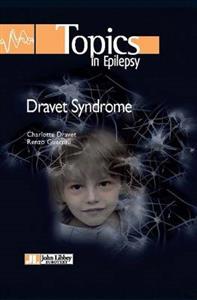
Dravet Syndrome
Charlotte Dravet,
Renzo Guerrini
Dravet syndrome is a rare and severe form of epilepsy. Severe myoclonic epilepsy in infancy was described for the first time by Charlotte Dravet in 1978 in Marseille. Common characteristics were observed, such as it appearing during the first year of life, sensitivity to fever, various types of seizures particularly myoclonic, and mental retardation. The following descriptions then led to the recognition of a genuine epileptic syndrome. Renzo Guerrini contributed to the understanding of its genetic factors and its response to antiepileptic medication. New drugs have emerged since and studies on cognitive disorders have enabled to determine the delayed development. The authors offer a summary of Dravet syndrome, and in particular, a description of the electroclinical characteristics that will help towards a better diagnosis. The different treatment options are illustrated in the work, which also provides an update on the genetics. While a large number of questions remain on the understanding of this syndrome, this monograph is an essential tool for practitioners to improve the management of children with epilepsy.

Alltid för er: en sann historia
Gunilla Lindh,
Cecilia Berglund
Min man och jag var lyckligt gifta. Vårt liv bestod av mycket arbete, rikt umgänge, resor, vandringar i Alperna och operakvällar. Livet var bekymmerslöst. Problemen i vår relation började när jag upptäckte att vår äldste son var annorlunda.
Under loppet av nio månader slogs mitt liv i spillror. Alla våra tre barn diagnostiserades med autism, utvecklingsstörning och betydande utvecklingsförsening till följd av en ytterst ovanlig genmutation med endast tre kända fall i världen.
Min man lämnade mig och barnen för ett nytt liv utan oss i Tyskland. Han ville som han sa köra Porsche igen. Mamma avled i bukhinnecancer och pappa drabbades av en allvarlig sjukdom. Jag förlorade nästan fotfästet. Det här är min berättelse.
Gunilla Lindh (f. 1968) är civilekonom från Handelshögskolan i Stockholm och har en Master of Sciencein Economics and Business. Hon arbetar som managementkonsult.
Cecilia Berglund (f. 1967) har en jur. kand. från Stockholms universitet. Hon arbetar som skribent och auktoriserad Stockholmsguide.

Det räcker inte med kärlek: en mammas kamp för sin son
Jenny Lexhed
Jenny och hennes make är i färd med att bygga upp sin familj och sitt företag, Talarforum, när de möts av beskedet att deras äldste son har autism. Kanske kommer han aldrig att lära sig att tala? Vi får följa familjen, och framförallt Jenny som kastas mellan hopp och förtvivlan. Jakten efter en behandlingsmetod som kan hjälpa Lucas gör henne alltmer desperat och till sist tar historien en ny dramatisk vändning. Jenny drabbas av en utmattningspsykos och blir tvångsintagen på den psykiatriska avdelningen. Här vidtar en annan resa, tillbaka till hennes starka, friska jag, och tillbaka till Lucas som så väl behöver henne.
En bästsäljare som översatts till finska, tyska och 2015 ges den ut i USA. Jenny Lexhed är civilekonom, en av grundarna till företaget Talarforum, författare och uppskattad föreläsare. Hon bor idag med sin man och deras tre barn i USA.
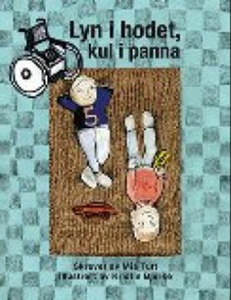
Lyn i hodet, kul i panna
Mia Tuft
Illustrationer Kristin Bjerke
Noe av det første som skjer i boka ”Lyn i hodet, kul i panna” er at hovedpersonens bror får et epilepsianfall i skolegården. Vi får innblikk i hvordan han takler det og blir videre kjent med de to brødrene i løpet av en dag i deres liv. Peder, hovedpersonen i boka, forteller om sitt forhold til broren, som har epilepsi, autisme og sitter i rullestol. Den gir innblikk i en del vanskelige situasjoner, men forteller også om Peders kjærlighet, omsorg og sterke bånd til broren. Boka er skrevet av psykologspesialist og Mia Tuft og illustrert av Kristin Bjerke. Passer for barn i tidlig skolealder. En barnebok for søsken som er pårørende og for familier der en av søskenene har spesielle behov.
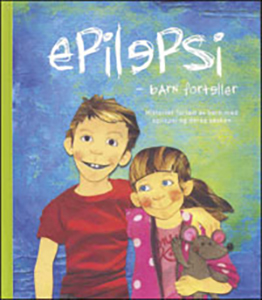
Epilepsi – barn forteller
Mia Tuft
Boken om barn og epilepsi er den første i sitt slag i Norge. – Det har vært viktig for oss å la barnas stemmer bli hørt og derved lage en barnas bok om epilepsi. Hver eneste dag får 1-2 barn i Norge diagnosen epilepsi. 70 prosent av dem vil ikke lenger ha sykdommen når de er voksne. Vi har gått til barn med epilepsi og deres søsken og bedt dem beskrive sine opplevelser, tanker og reaksjoner om denne sykdommen, sier psykolog og forfatter Mia Tuft. Behovet for informasjon om epilepsi er stort, og det kan være godt å høre om andre som har liknende historier som en selv. Arbeidshefte følger med boken, til bruk f eks i helsevesenet eller på skoler.
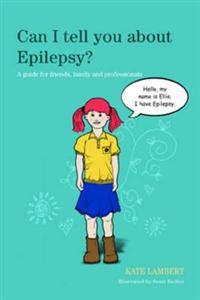
Can I Tell You About Epilepsy?
Kate Lambert
Ellie – a young girl with epilepsy. Ellie invites readers to learn about epilepsy from her perspective. She introduces us to some friends who help present the varying forms of epilepsy. Ellie and her friends help children to understand the obstacles that they face by telling them what it feels like to have epilepsy, how it affects them physically and emotionally, how epilepsy can be treated and how the condition is often misunderstood by people who do not know the facts. This illustrated book is full of useful information and will be an ideal introduction for children from the age of 7. It will also help parents, friends, and professionals to make sense of the condition in its varying forms and will be an excellent starting point for family and classroom discussions.
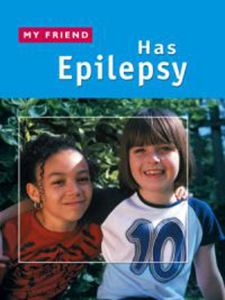
Has Epilepsy
Anna Levene
This series for younger children promotes positive attitudes toward disability through understanding and awareness. Ideal for both children with and without disabilities.
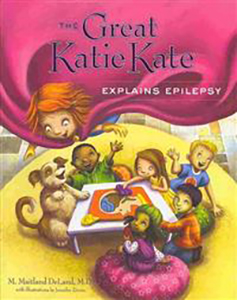
The Great Katie Kate Explains Epilepsy
M. Maitland DeLand
Jimmy is diagnosed with epilepsy, he starts to worry. What is happening to my body? Am I ok? Does this mean I’m different from other kids? Jimmy and the other young patients in the neurologist’s office get a visit from the Great Katie Kate, a spunky redheaded superhero who appears when kids get worried. Katie Kate takes the children on a medical adventure to learn about the various forms of epileptic seizures and treatments. Along the way, they meet the Worry Wombat, a creature that appears when worries loom large. As Jimmy and his new friends to ask questions about their condition and its triggers, they make the Worry Wombat disappear. This superhero saga provides an entertaining and indispensable tool for parents and medical professionals who are seeking a positive way to help young epilepsy patients understand their condition and deal with their fears. As a well-respected physician who specializes in the treatment of women and children, the author presents challenging medical concepts in clear, accurate, and understandable prose. This is the fourth book in the Great Katie Kate series, helping young children with serious illnesses understand their condition and live with confidence.
